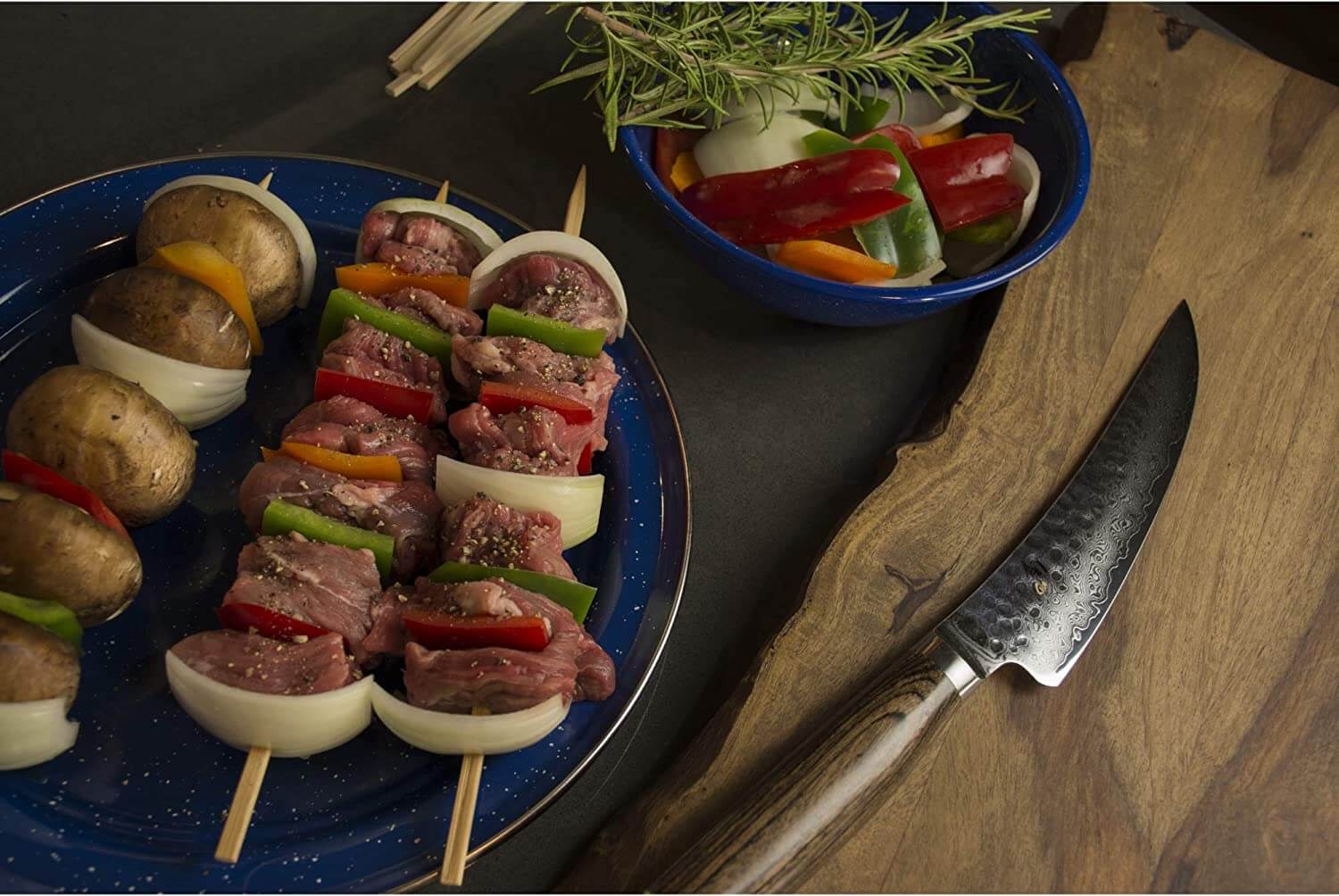Choosing the perfect boning knife is an essential step for any culinary enthusiast. This guide delves into critical factors like blade materials, flexibility, handle design, and maintenance.
Discover how to choose a boning knife that meets your specific kitchen needs, offering both functionality and durability.
Why Blade Material Matters
High-carbon stainless steel and carbon steel are top choices, but they're not your only options. You might also encounter ceramic or Damascus steel blades. Each material has its pros and cons; for instance, ceramic blades are extremely sharp but can be brittle and prone to chipping. Understanding the characteristics of each material can guide you in making an informed decision.
Flexibility and Blade Design for Precise Cuts
While a balanced level of stiffness and flexibility is ideal for most, the right level can vary depending on what you usually cook. For example, those who frequently debone fish might prefer a more flexible blade, while a stiffer blade might be better for red meat. Brands often specialize in different types of blade designs, catering to specific culinary needs.
Handle Design: Comfort Meets Functionality
The handle's design can also affect your control over the knife, so it's not just about comfort. For example, some handles have grooves or textured patterns to improve grip, while others might be shaped to fit the natural contours of your hand. These features can provide an extra level of security, especially when your hands are wet or greasy.
Maintenance and Longevity: What to Look For
In addition to ease of cleaning, consider how often the knife will need to be sharpened and what tools are suitable for the job. Some high-end knives might require specialized sharpeners or professional honing services. Knowing what kind of maintenance your knife will require can prevent surprises down the line.
Expert Reviews and Customer Feedback: Why They Matter
Reviews can offer more than just an opinion on a product; they can provide real-world insights that might not be immediately obvious. For example, a reviewer might note that a particular knife's handle material tends to degrade over time, or that the blade requires frequent sharpening. Such details can be invaluable in making an informed purchase.
The Evolution of the Boning Knife: A Brief History
The boning knife, as we know it today, has undergone significant transformations since its inception. While the basic concept of a knife designed for separating meat from bone has existed for centuries, the specialized boning knife has its roots in more recent culinary history.
In ancient times, people used sharp-edged stones, bones, or rudimentary metal blades for cutting and separating meat. As metallurgy advanced, so did the variety and specialization of knives. By the Middle Ages, bladesmiths were already producing an array of knives designed for specific tasks, although none were as specialized as today's boning knives.
In the 19th and 20th centuries, as culinary arts gained prominence and kitchens became more specialized, the demand for task-specific tools increased. This period saw the development of the modern boning knife, designed with a narrow, flexible blade to provide greater control and precision when deboning meat or fish.
Brands like Wüsthof and Victorinox pioneered ergonomic designs, incorporating high-carbon stainless steel blades and comfortable handles. Advances in materials science have also led to the introduction of ceramic blades, which offer excellent sharpness and corrosion resistance but lack the flexibility of steel.
Today's boning knives are a culmination of centuries of technological and culinary evolution, optimized for performance, durability, and ease of use. They are a testament to human ingenuity, adapting and improving with each generation to meet the ever-changing needs of chefs and home cooks alike.
By carefully considering these factors, you can choose a boning knife that not only meets but exceeds your culinary needs. Don't forget to match the knife to your specific requirements and budget for the best results.
FAQ
What are some reputable brands for boning knives?
Several brands are known for producing high-quality boning knives. Some of the most reputable ones include Wüsthof, Victorinox, Global, Shun, and J.A. Henckels. These brands are well-regarded for their craftsmanship, blade quality, and overall durability.
Can I use a boning knife for tasks other than deboning?
While boning knives are specifically designed for deboning tasks, their sharp and flexible blades make them versatile tools. You can use a boning knife for filleting fish, trimming fat off meat, or even for certain vegetable preparation tasks. However, they are not a substitute for knives designed for other specific tasks, like bread knives or chef's knives.
What is the price range for a high-quality boning knife?
The price of a high-quality boning knife can vary widely depending on the brand, material, and craftsmanship. You can find decent models starting at around $30, but high-end models from reputable brands can cost upwards of $100 or more. It's essential to consider your budget and specific needs when selecting a boning knife.
Further Reading
- For those still contemplating between a boning knife and a fillet knife, check out our detailed comparison in the article "Boning Knife vs. Fillet Knife: Understanding the Differences."
- Explore our best boning knives in our comprehensive review article.



